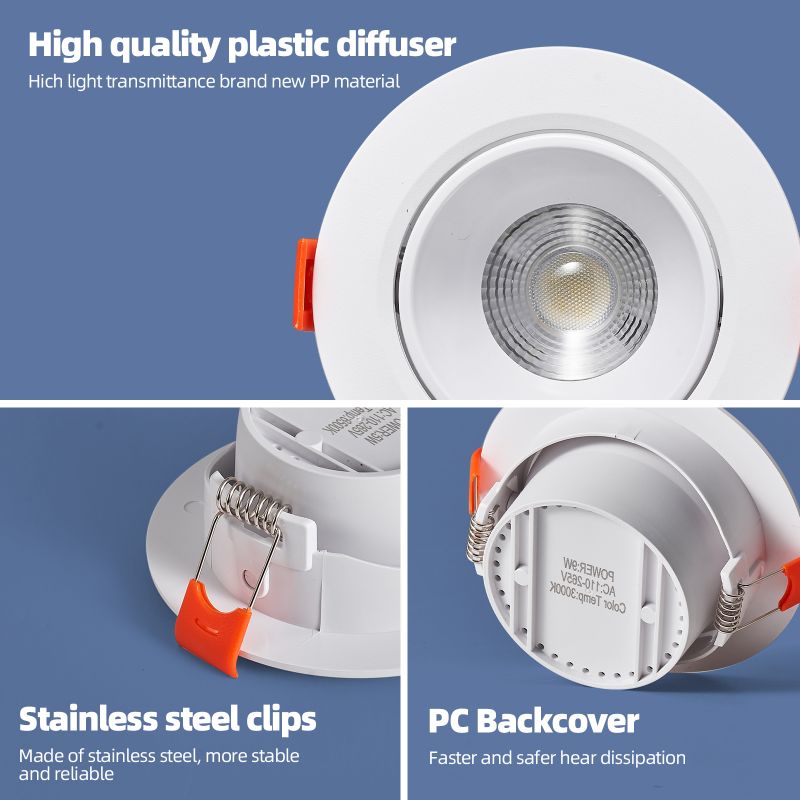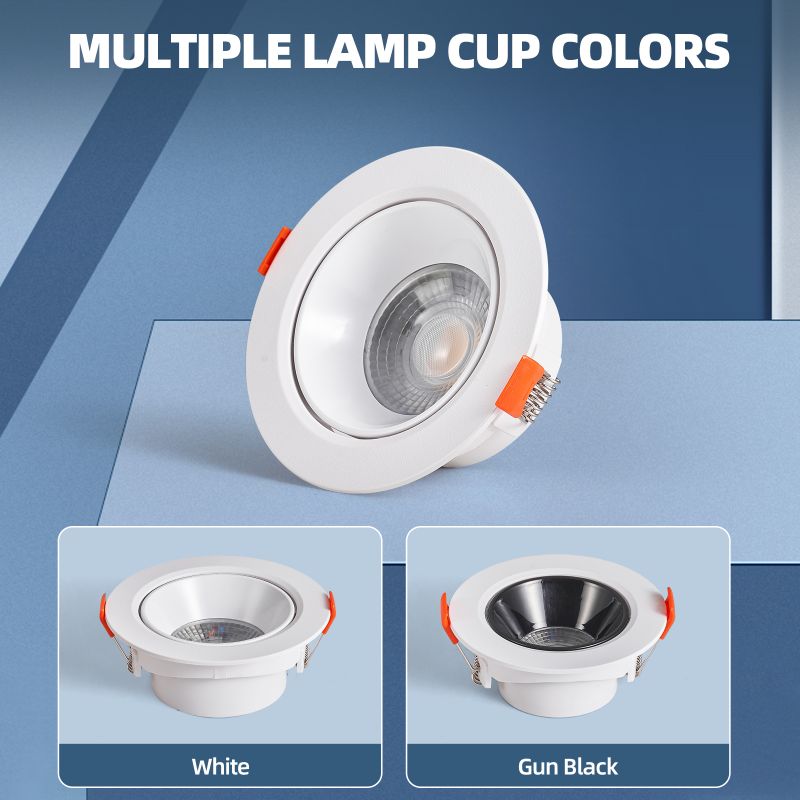Confused about how to choose the right LED light? For decades, we reached for a bulb based on its wattage – 60W, 100W – equating higher wattage with brighter light. But LED technology has changed the rules entirely! Understanding three key concepts – Wattage, Lumens, and Luminous Efficacy – is crucial for choosing the best, most energy-efficient lighting.
1. Core Concepts Clarified
Wattage:
Definition: The rate at which a lighting fixture consumes electrical energy, measured in Watts (W).
Key Insight: Wattage indicates power consumption and operating cost. Critically, it does NOT directly indicate how bright a light is! The common belief linking high wattage to high brightness originated in the incandescent era, where this was largely true. Modern LED technology has revolutionized this relationship.
Brightness (Luminous Flux):
Definition: The total amount of visible light emitted by a fixture, measured in Lumens (lm).
The Crucial Metric: Lumen output is the true, objective measure of a light fixture's brightness. To know "how bright" a light will be, look for its lumen value. Higher lumens mean more total light output.
Luminous Efficacy:
Definition: How efficiently a lighting fixture converts electrical power into visible light. The unit is Lumens per Watt (lm/W). The formula is:
Luminous Efficacy (lm/W) = Luminous Flux (lm) / Power (W).The Connecting Bridge: Efficacy is the key to understanding the relationship between Watts and Lumens. It represents energy conversion efficiency. Higher efficacy means the light produces more light (higher lumens) for less power (lower wattage), which is the fundamental reason LEDs save significant energy compared to older technologies.
Relationship Summary:
Wattage (W) = How much power is consumed (costs you money).
Lumens (lm) = How much light is produced (how bright it is).
Luminous Efficacy (lm/W) = How efficiently power is converted into light.
Core Equation:
Brightness (Lumens) ≈ Wattage × Efficacy
2. Choosing the Right LED Lighting (Guiding Customers)
Step 1: Break the Wattage = Brightness Myth
"Previously, shoppers instinctively looked for wattage, thinking higher numbers meant brighter light. This made sense for electricity-hungry incandescent bulbs. However, LED technology is fundamentally different!"
Step 2: Determining Usage Scenario
Ask: "Where will you use this light? Is it for the living room, bedroom, kitchen, or study? What's the primary purpose? Is it for general illumination, reading/working, or creating ambiance?" Different spaces and purposes demand vastly different levels of brightness.
Step 3: Determine Required Brightness (Lumens)
Based on the usage scenario, provide a lumen range recommendation. This is the most scientific and crucial step. Forget just talking about watts!
General Reference (Based on Standards/Experience):
Living Room: Main lighting ~ 2000 - 4000 lm (Varies by size, height, decor).
Dining Room: Focused table lighting ~ 3000 - 6000 lm.
Kitchen: Task areas (countertops, stove) ~ 5000 - 7000 lm. Undercabinet lighting is highly recommended.
Bedroom: General light ~ 2000 - 3000 lm; Bedside reading lamp ~ 300 - 500 lm.
Study/Office: Workspace ~ 3000 - 6000 lm. (Can include a 500lm task lamp).
Hallway/Bathroom: Basic lighting ~ 1000 - 2000 lm.
Closet/Vanity: ~2500 - 4000 lm (Requires high Color Rendering Index (>90 Ra)).
Basis: These ranges stem from lighting requirements like those in the Chinese National Standard GB 50034 for illuminance (Lux). Calculated by multiplying recommended Lux by room area.
Step 4: Select Fixture Type & Know its Efficacy
"Different LED fixture designs (e.g., downlights, ceiling lights, tubes) have varying efficiencies, even at the same wattage. Choose high-efficiency products! Quality LEDs range from 80-150+ lm/W (e.g., Philips, Osram), standard home LEDs are often 70-120 lm/W."
Examples: Ceiling light: 100 lm/W; Downlight: 80 lm/W; LED bulb: 90 lm/W.
Step 5: Calculate Approximate Required Wattage
Use the formula: Recommended Wattage (W) ≈ Desired Lumens (lm) / Fixture Efficacy (lm/W)
Crucial Example:
Scenario: Lighting a 15 sqm study for reading/work.
Lumens needed: ~15m² * 400 lux = 6000 lm.
Fixture: Flat panel ceiling light (~100 lm/W efficacy).
Wattage needed: ~6000 lm / 100 lm/W = 60W
Key Point: "Choose a fixture rated at ~6000 lumens. If its efficacy is high (100 lm/W), a 60W fixture suffices. A lower efficacy fixture (e.g., 80 lm/W) would require 75W to achieve the same 6000 lumens. Higher efficiency saves power!"
Step 6: Read the Product Label - Look for Lumens!
"When purchasing, ALWAYS look for 'Luminous Flux' or 'Lumens' (lm) on the packaging or specifications – NOT just the wattage size! This is the most reliable indicator of brightness. Compare labels:"
Label A: "LED Ceiling Light, 120W" - Not good (No brightness info)
Label B: "LED Bulb, 6W (Replaces 60W Incandescent)" - Okay (Equivalent stated, but not precise)
Label C: "LED Downlight, Luminous Flux: 800 lm, Power: 9W" - Excellent! (Clear key parameters)
"Label C is the type of trustworthy information you need."
3. Additional Selection Factors
Color Temperature: (e.g., 2700K warm for bedrooms, 4000K neutral for kitchens/offices).
Color Rendering Index (CRI): Crucial for spaces needing accurate color distinction (dining rooms, closets). Choose Ra >90.
Beam Angle: Important for directional lights (spotlights/downlights).
Dimmability: Essential for ambiance control (confirm driver compatibility).
Fixture Material & Heat Dissipation: Poor heat management leads to faster lumen depreciation in high-brightness LEDs.
Brand & Warranty: Reliable brands offer better lumen maintenance, color quality, and lifespan.
The Bottom Line: Choose Smart, Save Smart
"Lumens (lm) measure how bright the light is."
"Watts (W) measure how much power it consumes."
"Efficacy (lm/W) measures how efficiently it turns power into light."
"Your New Lighting Shopping Steps:
Determine Needed Brightness (Lumens) based on room and use.
Select High-Efficiency Fixtures (High lm/W).
Use Efficacy to Calculate Necessary Wattage."
Stop asking: "Is a 60W LED bright?" Instead, state the need: "I need a ceiling light with about 4000 lumens" – this allows us to find the truly suitable product efficiently.
"High-Efficiency LEDs = Real Savings: For the same brightness, every 10 lm/W gain in efficacy can save 10-15% on electricity bills. The savings over years add up!
"Look for Lumens on the Box Next Time. Don't be fooled by the big wattage number alone!"





